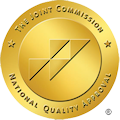Alcohol Addiction
Rehab Center
Alcohol addiction is sadly one of the most common substance use disorders; it’s easily accessible (even for those who are underage) and is sometimes easy to hide if someone is a functioning alcoholic. It’s often difficult for people to accept and admit that they have a problem due to the stigma surrounding alcoholism. Most often, people think they have complete control over their addiction when they don’t; it is then that alcoholism becomes more destructive and complicated for everybody involved.
This is why we treat those with alcohol use disorders at California Addiction Treatment. The individualized process we employ makes our alcohol addiction rehab center the utmost in professional care.
What is
Alcohol Use Disorder?
Alcohol Use Disorder (AUD) is a medical condition characterized by an inability to stop consuming alcohol. Those who suffer from AUD can’t control their alcohol intake despite social, occupational, or health consequences.
This specific disorder encompasses a range of behaviors. Some of these include frequent overconsumption of alcohol, increased tolerance, and experiencing withdrawal symptoms when not drinking. AUD affects the entire body, which is why it is important to undergo alcohol detox safely at the beginning of treatment.
AUD is classified as a brain disorder; it can severely impact an individual’s life, affecting personal relationships, professional commitments, and overall health. It is estimated that around 6% of adults in the United States suffer from AUD. Men are more likely to develop this disorder than women. This prevalence highlights the need for increased awareness and understanding of AUD, as well as access to effective treatment options.
What are
the Signs of Alcohol Addiction?
Recognizing the signs of alcohol addiction is crucial for seeking help early. These signs may include the following:
- Increased tolerance to alcohol
- Shaking
- Sweating
- Anxiety
- Neglecting responsibilities at work, school, or home because of drinking
- Continuing to drink despite knowing it’s causing physical or social harm
- Inability to control or reduce alcohol consumption, despite the desire to do so
If these signs are evident, it might be time to seek professional help.
What are
the Signs and Dangers of Alcohol Withdrawal?
Alcohol withdrawal can manifest through a range of signs, from mild to severe. Symptoms typically begin within hours to a few days after the last drink.
Symptoms include:
- Anxiety
- Tremors (such as shaking hands)
- Insomnia
- Nausea
- Sweating
In more severe cases, individuals may experience the following:
- Hallucinations
- Seizures
- Delirium tremens (a life-threatening condition characterized by confusion, rapid heartbeat, and fever)
The dangers of alcohol withdrawal underscore the importance of seeking medical supervision during the detoxification process. Complications can be fatal without appropriate medical intervention.
How Does
Alcohol Use Disorder Affect Your Health?
AUD can have profound and far-reaching effects on an individual’s health. AUD does profound damage to the liver, leading to conditions like fatty liver, hepatitis, and ultimately, cirrhosis. It also increases the risk of heart disease, stroke, and high blood pressure. Additionally, AUD is linked to a higher incidence of certain cancers.
Beyond physical health, AUD significantly impacts mental health, exacerbating conditions such as depression and anxiety. Individuals predisposed to these disorders will have an increased risk of developing them. AUD also disrupts sleep patterns, affects brain function, and can lead to serious cognitive impairments over time.
Does Alcohol Use Disorder
Worsen Mental Illness?
AUD can significantly exacerbate mental illness, creating a complex interplay that deepens the severity of both conditions. Oftentimes, individuals may turn to alcohol as a means to self-medicate against symptoms of mental health issues.
People suffering from AUD may not realize that alcohol can impair cognitive functions, alter mood, and increase the risk of depression and anxiety over time. This cyclical relationship makes diagnosis and treatment more challenging.
What is
the Connection Between Alcohol Addiction and Co-Occurring Mental Illness?
The connection between AUD and co-occurring mental illnesses is complex and multifaceted. Various studies suggest a relationship that works like a two-way street; AUD can increase the vulnerability to certain mental health conditions, such as depression and anxiety, and vice versa.
This comorbidity can create a cyclical pattern of worsening symptoms for both disorders, complicating treatment and recovery processes. It highlights the need for integrated treatment approaches that address both AUD and co-occurring mental health conditions simultaneously. This is referred to in many circles as dual diagnosis treatment.
What is
Dual Diagnosis?
Dual diagnosis refers to the simultaneous presence of a mental health disorder and a substance use disorder in an individual. This condition recognizes the complexity between these two types of disorders in their relationships with each other. Each can exacerbate or influence the severity and trajectory of the other.
Dual diagnosis can manifest in various ways, with different mental health disorders and substance use disorders interacting differently in each individual. Some common examples of dual diagnosis include depression and alcoholism, anxiety disorder and cocaine addiction, or bipolar disorder and opioid abuse. These are just a few examples, as the combination of mental health disorders and substance use disorders can vary greatly.
Addressing a dual diagnosis can be challenging, as treatment must holistically cater to both the mental health condition and the addiction. This goes a long way to ensure an effective recovery process.
How Many People
Suffer from Alcohol Use Disorder?
Globally, AUD affects millions of individuals, posing significant health risks and societal challenges. An estimated 5.1% of the global burden of disease and injury is attributable to alcohol, reflecting the widespread impact of AUD.
In the United States alone, approximately 14.5 million people aged 12 and older suffer from AUD. There is a widespread need for effective prevention, treatment, and support systems for those afflicted by this disorder.
What is
the Problem with Alcohol Abuse?
Alcohol abuse poses severe risks and problems encompassing a wide array of physical, psychological, and societal issues.
Physically, excessive alcohol consumption can lead to liver diseases, heart problems, and an increased risk of cancer. This is a small sample of the physical harm that AUD can do over time. Psychologically, it can exacerbate or contribute to mental health disorders, such as depression and anxiety. Societally, alcohol abuse is linked with an increase in car accidents, and injuries, and a strain on relationships within families and communities.
It is clear that alcohol abuse has far-reaching consequences that impact not only the individual but also their loved ones and society as a whole. This highlights the importance of addressing alcohol abuse through awareness, prevention, and intervention strategies. It’s important to learn healthy coping mechanisms for stress and negative emotions so that addictive substances don’t become the default and cause even more problems.
How is
Alcohol Abuse Disorder Diagnosed?
AUD is typically diagnosed through a comprehensive evaluation; this includes a thorough history of the individual’s drinking patterns, behaviors, and the impact on their daily functioning.
Healthcare providers may use standardized screening tools and diagnostic criteria, such as those outlined in the Diagnostic and Statistical Manual of Mental Disorders (DSM-5).
Criteria include a pattern of alcohol use leading to significant impairment manifested by at least two of the following eleven specified factors within 12 months:
- Craving or strong desire to consume alcohol
- Increased tolerance, i.e. needing to consume more alcohol to feel the effects
- Alcohol use in physically dangerous situations (such as driving)
- Consuming alcohol for longer periods of time or in greater quantities than intended
- Continued drinking despite persistent (or exacerbated) social or personal problems due to drinking
- Excessive time is used to recover from drinking or procuring alcohol
- Drinking alcohol leads to an inability to meet responsibilities at work, school, or home
- Reduction in social, recreational, or professional activities due to drinking
- Experience of withdrawal symptoms when stopping alcohol use and/or consuming alcohol to avoid withdrawal symptoms
- Unsuccessful attempts (or a persistent desire) to stop drinking
- Drinking despite knowledge of a psychological or physical issue caused by drinking
This pattern of symptoms is used to assess the presence of AUD, with more symptoms equating to higher severity.
How do
Alcohol Treatment Centers Work?
Alcohol treatment centers operate by offering a structured and supportive environment for individuals struggling with alcohol use disorder. The goal is to address the physical addiction to alcohol and the psychological aspects, fostering skills and strategies for long-term sobriety.
At California Addiction Treatment, we provide a comprehensive approach to recovery. We do this by incorporating detoxification processes, individual and group therapy sessions, and education on substance misuse. Treatment plans are tailored to meet the unique needs of each individual, encompassing a range of therapies. Some of these include cognitive-behavioral therapy (CBT), motivational interviewing, and relapse prevention techniques.
Is it Possible
to Cure Alcoholism with Group Therapy?
Therapy is not a cure for alcoholism. However, it plays a crucial role in the treatment and recovery process for many individuals battling this condition. Group therapy helps individuals feel less isolated in their struggles. It does this by fostering a supportive environment where participants can share experiences and strategies.
Group therapy provides a platform for learning coping mechanisms and gaining insights from peers at various stages of recovery. This collective approach can significantly enhance motivation and sustain long-term sobriety when combined with professional medical treatment and counseling. However, it’s important to remember that recovery from alcoholism is a complex and ongoing process that often requires comprehensive treatment.
Alcohol Addiction Rehab in Huntington Beach
California Addiction Treatment in Huntington Beach offers comprehensive treatment at our alcohol addiction rehab center. Our goal is ultimately to provide individualized treatment to those who need it. We provide resources and support to help you achieve your goals and build a life of sobriety you can sustain.
If you or a loved one would like to find out more, contact us here. We’re here to help and support your journey to recovery.

Dr. Deena Manion LCSW #20628, a Doctor of Psychology and Licensed Clinical Social Worker since 1993, is the Co-Founder of California Addiction Treatment Center. She brings extensive experience in addiction and mental health from her previous roles at prominent recovery centers and her private practice in Los Angeles and Agoura Hills, CA. Dr. Deena has also appeared as an expert on Dr. Phil’s show and podcast, as well as various other TV programs and documentaries, sharing her expertise in mental health and addiction. Her goal is to leverage her clinical skills in the entertainment industry to reach a wider audience, making her a valuable asset in the field.



